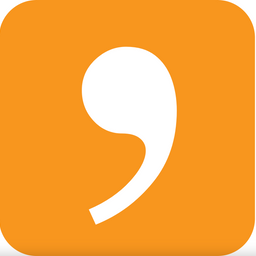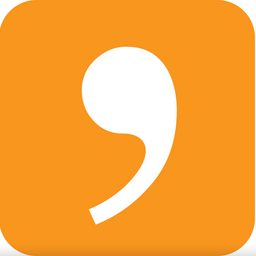How Managers and Team Leaders Can Reduce Performance Anxiety in the Workplace

Wondering why your employees’ job performance is suffering? This might be the answer:
There’s a huge change that your employees are struggling with the fear of failure. Roughly 80% of Americans are affected by performance anxiety weekly, making it difficult to complete job responsibilities in the workplace and causing serious psychological distress.
Frankly is here to provide essential information, tips, and services that managers and team leaders can use to help their employees overcome performance anxiety. This blog will discuss:
- What performance anxiety means
- What performance anxiety looks like
- Strategies for managers and team leaders
- How Frankly can help
What Is Performance Anxiety?
Performance anxiety is a lingering feeling of fear, stress, or uneasiness associated with the anticipation or completion of tasks at work. It can stem from a variety of factors like low confidence, fear of failure, and unrealistic expectations. This anxiety can occur in any situation in which one is expected to perform; this includes stage/artistic performances, sports, social situations, school exams, public speaking, and any other act that requires meeting expectations.
In the workplace, performance anxiety can arise while interacting with clients and coworkers, completing tasks, giving presentations, and other high-performance duties.
About 50% of employees who experience performance anxiety say that their symptoms arise most in the face of handling deadlines, interpersonal relationships, and staff management. Performance anxiety doesn’t just mean being nervous about doing these duties—it is an excessive sense of self-doubt and fear that seriously affects an employee’s ability to execute their jobs.
Performance anxiety is certainly not uncommon among employees. Out of the 80% of employees who face this anxiety, one-third of claim to feel insecure about their work multiple times a week. With this, over 50% of these employees say that performance anxiety negatively affects their workplace performance, relationships with coworkers, and quality of work, meaning that this isn’t just a personal problem–it affects everyone.
Performance Anxiety isn’t just an employee issue, though. The symptoms from performance anxiety can cost large companies nearly $3.6 million dollars every year. The consequences are very real and very damaging.
The Symptoms
Performance anxiety can present itself through both psychological and physical symptoms in anxiety-inducing situations. Here are some signs to look out for.
Psychological symptoms:
- Loss of concentration
- Racing thoughts or brain fog
- Irritability and poor communication with colleagues
- Avoidant behavior towards job responsibilities
- Excessive self-criticism and self-doubt
- Exacerbation of current and future situations
Physical symptoms:
- Sweating
- Rapid heartbeat
- Dry mouth
- Trembling
- Fatigue
- Muscle tension
These intense, negative symptoms often cause employees to feel overwhelmed and out of control of their work, leading them to feel stuck and hopeless in completing a task. This typically causes reduced job satisfaction and decreased quality of work, meaning that both the company’s overall productivity and the employee’s happiness take a serious hit.
How Can Employers Help?
So how can we go about reducing performance anxiety to help employees manage their job responsibilities in a healthy way? Well, as managers and team leaders, a great place to start is to consider what kind of environment you’ve created in your workplace.
One of the major reasons that performance anxiety in the workplace persists is that employees don’t feel comfortable talking to their bosses about their stress because they fear repercussions. Only 40% of those who experience work-interfering stress have discussed the issue with their bosses. That’s less than half of employees!
Let’s look, then, at how managers and team leaders can focus on creating an environment in which their employees feel comfortable expressing their stress.
- Be cautious of how much work you’re allotting
One common cause of performance anxiety for employees is an overwhelming workload. With too many tasks to juggle, employees can easily get stressed as they worry about not getting all the work done or not giving each task the appropriate attention. They can become anxious about not giving their best quality of work and fear scrutiny about failure to complete the tasks effectively.
Because of this, try to limit the amount of work your employees have. What a manageable workload looks like varies from person to person, but be sure to consider if the work you’re allotting to a single person is something that a single person can even do by themselves. Is the amount of work better suited for a whole team of two to three people? If so, then spread the work out.
Other factors to keep in mind when allocating work are time constraints, complexity of the task, availability of resources, and the employee’s individual capabilities. And remember, a work week that is 55 hours or more introduces risk of burnout and intense stress.
A great way to be conscious of the amount of work you assign to your employees is to use project management tools like Asana, Smartsheet, and Trello. These software applications are tools that help teams track and manage projects, meaning you can easily organize deadlines, task assignments, communication, and project progress. With online programs like these, your team’s workload is clearly laid out for you, which will help you better assess the manageability of your expectations for your employees.
- Facilitate open and honest communication
As we already discussed, less than half of employees speak to their employers about their performance anxiety. So, how do you know if your employee is experiencing performance anxiety and stress? Just ask them!
It’s important to take a people-focused approach when considering your communication with your team. Check in regularly with your employees through surveys, group meetings, and one-on-one interactions, so you can directly hear their opinions and feelings. By asking them how they’re managing their workload and how they’re feeling about their job responsibilities, you can get direct insight into what your employees need to help reduce stress.
You can use communication tools like Slack and Microsoft Teams to facilitate communication within your organization by giving your team a space to chat. Tools like this create an atmosphere of open communication and allow teams to avoid silos in the workplace which can be prevalent as companies get scale.
During these interactions, ask them questions that show you value their experience as an employee and personal well-being. Here is a list of strong people-focused questions:
- How is your work-life balance?
- What challenges are you facing?
- What support do you need to successfully complete your responsibilities?
- Are you satisfied with your workload?
- Do you feel overwhelmed at work?
- How can the company better support your career goals?
- What can I do for you to make your experience more positive?
By asking questions like these, you’ll show your employees that you are invested in creating a positive work environment, and you are taking active steps to do so. Be genuine and caring in these interactions, and your employees will feel comfortable disclosing their concerns to you.
When you get feedback from these questions, make sure to apply it. Consider what you can do to accommodate their concerns and to make your workspace comfortable, productive, and fun. By actually applying their feedback, your employees will feel respected and heard.
Click below to view another Frankly blog that discusses creating a comfortable work environment in more detail.

- Encourage employees to take breaks
One of the results of performance anxiety is that the employee feels stuck in their task, unable to continue due to fear of failure. The more the employee tries to contemplate the task, the more overwhelming the experience becomes. A great way to try to stop that cycle is to take a break.
Make sure that you actively encourage your employees to take breaks. By continuously reminding them to take breaks, you will reassure them that there will be no repercussions for doing so. Employees should have a short break every 30-90 minutes or more frequently for maximized productivity and well-being. You can remind and encourage employees to take breaks in your daily interactions with them, or you can make it a company policy to ensure that employees truly are keeping their wellness in mind.
Frankly’s blog about micro workouts offers a great way employees can use their breaks in a way that’s beneficial to the body as well as the mind. Click below to read more.

Taking breaks is essential to reducing stress and increasing productivity, employee morale, and job satisfaction. After taking a break, employees will be able to return to the previously stress-inducing task with a clear mind and new perspective. Your employees’ happiness and company’s productivity will see the benefits.
What Can Frankly Do for Performance Anxiety?
Frankly is here to support every company and its employees amid performance anxiety and stress in the workplace. Frankly is a wellness company that provides assistance through our holistic, person-centric approach.
If your employees struggle with performance anxiety, Frankly can offer you a multitude of services ranging from one-on-one sessions with individual employees to group and co-working sessions where your entire team can learn about reducing anxiety in the workplace. We’ll pair you with a health and wellness coach that will work with you to devise a wellness plan that is unique to you and your company.
Your wellness coach can help you identify the roots of performance anxiety and work with you through personalized sessions and training to find a solution that’s right for you. We’ll help you define your company's goals and break down the steps to meeting them while focusing on the mental health and wellness of you and your employees.
To learn more about how Frankly can support your team's wellness, book a 15-minute demo.
Workplace Without Performance Anxiety
The strategies discussed in this blog can help you start to take steps towards creating a workplace that is free from performance anxiety. With the reduction of performance anxiety, your company can thrive in a healthy, productive, and satisfying environment. With your awareness of and desire to reduce stress-inducing situations, your employees will surely begin feeling the benefits of increased productivity and improved mental health.
Your company will see improved employee morale and quality of work while fostering a space in which everyone can feel pride in their team. Life without performance anxiety is certainly a good one.
Author: Marissa Adams
Resources
Anxiety and Depression Association of America



Comments ()